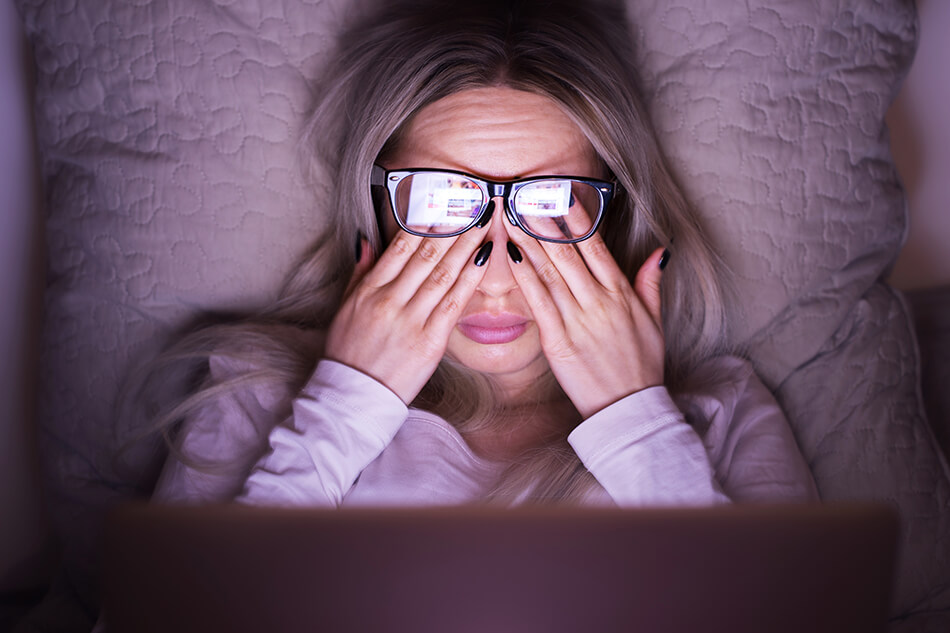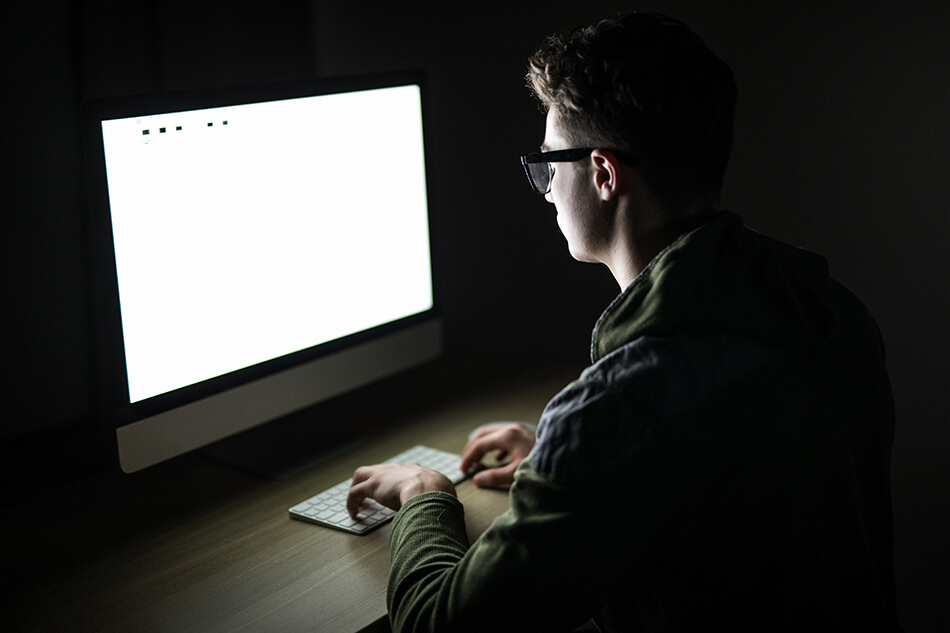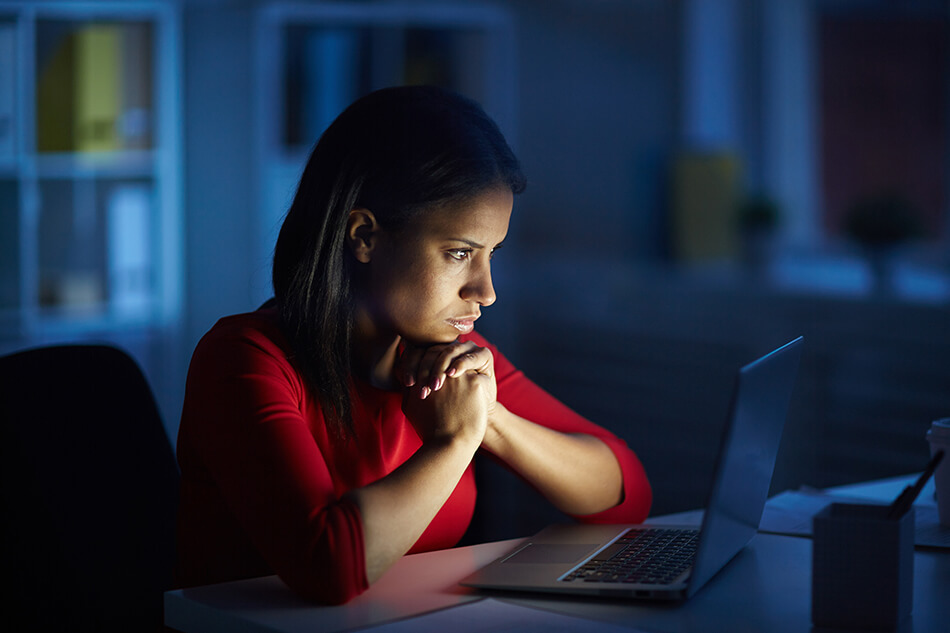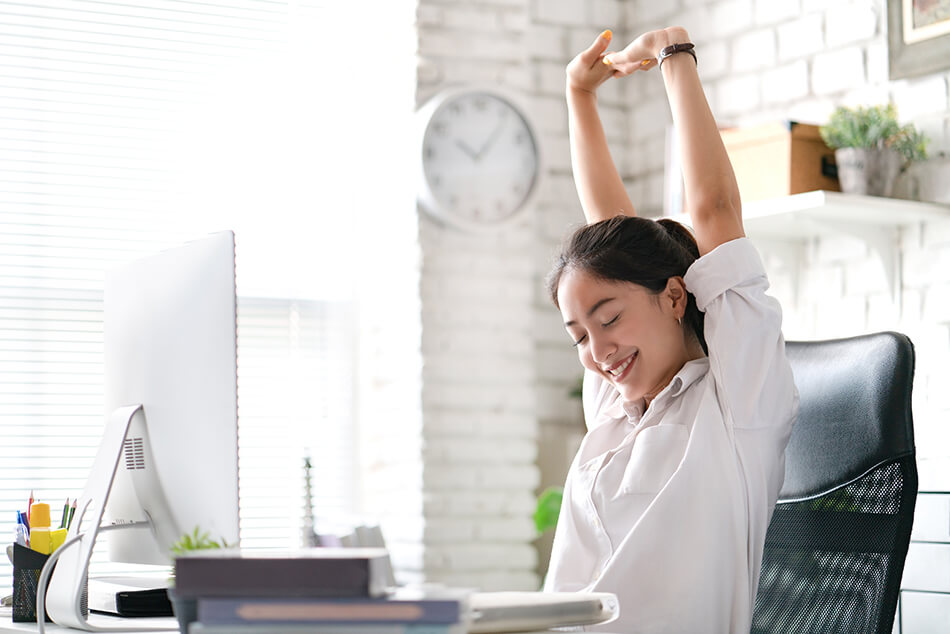5 Easy Ways to Protect Yourself From Eye Strain

Eye strain is the result of spending too much time focussing on one thing close-up. Staring at a computer screen or reading a book for a long time forces your eyes to focus for longer than is comfortable.
The tiredness or irritation you feel in your eyes during or after such an activity is eye strain. Now that the majority of us spend huge stretches of time staring at screens, digital eye strain is on the rise. Research has shown that between 50 and 90% of office workers have eye strain or associated eye health issues. And it’s so easy to avoid! Here are 5 ways you can protect yourself from eye strain today.
1)Get an Eye Test
The American Optometric Association recommends having comprehensive eye exams at the following intervals:
- Babies and toddlers should have one exam between the ages of 6 and 9 months.
- Children aged 3 to 5 should have one eye exam during these years.
- Children and young adults between 6 and 17 should have an eye exam per year.
- Adults between 18 and 64 should have an eye exam at least every 2 years
- Adults aged over 65 should have an eye exam every year.
If you work with a computer every day, experts recommend you have a comprehensive eye exam every year. This is to ensure your prescription has not changed and to detect any current eye problems. You will also need an up to date prescription to order contact lenses online.
During the test be sure to tell your eye doctor exactly how much screen use is normal for you. It’s also a great idea to measure the distance between your eyes and your computer screen before your exam. This will help your eye doctor as they will be able to test your eyes at that distance.
You may need to change the vision correction you’re currently using. If so, you might consider switching to contact lenses designed to stay lubricated, such as Air Optix Hydraglyde. This can help reduce the discomfort when you’re working on computer devices and not blinking as often.

2)Adjust Your Lighting
You can avoid straining your eyes when reading or focusing on an object up close for a long time by turning on a lamp. If you’re focusing on a digital screen you should try to match the light coming from the screen to the room. Or vice versa. Screen devices are usually very bright. Using these devices in dim surroundings is a major cause of eye strain.
Glare also causes eye strain. Try anti-glare filters! You can use them with most screens such as phones, laptops, and tablets. If you wear glasses or contact lenses it’s a good idea to pay the extra for anti-reflective coatings. These coatings minimise the amount of light that can bounce off the screen and into your eyes.
Does Reading in Low Light Hurt Your Eyes?

Traditionally when people think of eye strain, they think of reading in low light. How many of us have at some time been reading and someone comes into the room saying “Turn on a light. You’ll hurt your eyes.”
It’s true that reading in a low light environment can make your eyes work harder. And if your eyes struggle to focus, you might experience short-term eye strain. But, there is no scientific evidence to suggest reading in low light causes long-term damage.
Forcing your eyes to work harder than they need to can also cause dryness. This is because you blink less often when your eyes focus on something. Symptoms of dry eye include a scratchy, stinging sensation, teary eyes and discharge. You might also feel like there is something stuck in your eye. Dryness does not always damage the structure or function of the eyes. And, this should not turn into a long-term problem. Artificial tears or other eye drops will often help.
3)Take breaks
Taking regular breaks away from your computer screen gives your eyes a chance to rest. We know, it’s easier said than done! During a busy workday it’s important that you aim to take a 15-minute break from your screen every two hours. If this isn’t practical in your line of work aim for a little less, like a 5-minute break every two hours. Even a short break, that breaks up the day, will reduce the likelihood that you will develop eye strain.
When taking a break you should step away from your computer and take a short walk. If that’s not an option you can still rest your eyes while remaining seated at your desk. Focusing on something close-up on causes eye fatigue and eye strain. One way to avoid this is to use the 20-20-20 rule. Look away from your screen every 20 minutes and focus on an object 20 feet away for 20 seconds. This relaxes the focusing muscle in your eye. It’s a short break but one worth taking!

4)Change Your Work Space
The closer your digital device or computer screen is to your eyes, the harder your eyes have to work to focus. This applies to any close-up work. Reading, sketching, working on something small with your hands, can cause eye strain. Sometimes the easiest way to minimise eye strain is to change your work environment and how you use it. Experts recommend that you move your computer screen so that it’s no closer than 16 inches from your face. Other things you can do include:
- Alter your screen settings if you can’t move the screen.
- Make the text larger.
- Increase your computer’s refresh rate to minimise flickering on the screen.
- Adjust the colour levels on your monitor towards the yellow/red end of the colour spectrum.
- Use your smartphone or tablet’s night setting to change the colour temperature of your screen for night time use.
5)Blink, blink, blink!
It’s normal to blink around 15 times per minute. But when looking at screens most of us drop our blink rate down by around a third. Not only do we blink less when staring at screens, but we also blink differently. When looking at a screen and blinking, our upper eyelid often doesn’t come all the way down. Because the eye is not actually closing all the way, our tear ducts are not triggered to release moisture. Any tears coating the eye will also evaporate faster. If you notice your eyes are drying out due to excessive screen use you can use artificial tears as a temporary measure.
Don’t make your eyes work any harder than they have to. Take our advice and make these five easy changes to start protecting yourself from eye strain today!
When you feel eye strain take note and take the time to care for your eyes. Remember the 5 things you can do to minimize it.
- Get your eyes tested annually.
- Change the lighting
- Take breaks
- Change your workspace
- Blink, blink, blink!